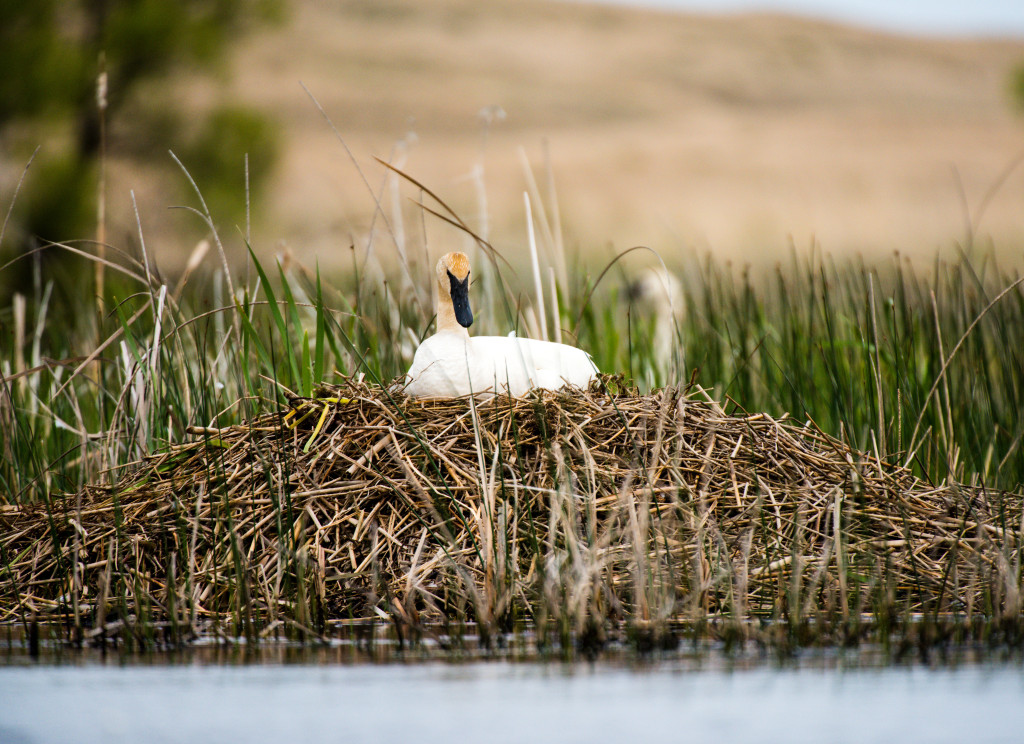
By Monica Macoubrie, Wildlife Education Specialist
I’m sure all of us have seen a bird’s nest before. It’s normally a conglomeration of sticks, mud, twine, leaves and sometimes trash, like wrappers or old fishing line. Whatever the material it’s constructed from, a bird’s nest is truly an amazing feat of engineering. Imagine your own home: It’s strong enough to weather a storm, it’s waterproof, it protects you from the cold and the heat, and it holds your entire family. A nest and a human home are not that much different in function, except for maybe a few thousand square feet and some crown molding. But odds are you didn’t build your home without blueprints or directions, and you likely used more tools than a beak.
No matter the species and no matter the style of nest, all birds’ nests serve the same purpose: to protect eggs and hatchlings. Nest styles are based on species, location and climate. But before diving into the actual building process, there is a checklist that birds must tick off before building a nest.
First, the bird must find a suitable building site. A male house wren, for example, will pick out several potential sites and save these areas from other competing birds. To “save spots,” the male will pile several small twigs in each area known as “dummy nests.” The female is then taken around and shown all the choices until she picks one. On the other hand, Baltimore oriole females take the lead: She choose the site and begins building it herself, with maybe only a few suggestions from the male. Each species has its own nest-building routine, which is usually strictly followed.
Next, birds need to find materials, which consist mostly of natural elements found close by. Remember, nesting material is limited by the size of the bird. Normal nesting materials involve sticks, mud, dried grass, leaves, feathers or plant fibers. Some birds, like the ruby-throated hummingbird, will use spider webs to glue nest materials together. Most bird nests take an average of four days to complete and that also includes hundreds, if not thousands, of trips carrying materials to build.
After birds have chosen a building site and gathered the materials they need, who actually gets down and dirty to build the nest? Well, most building is done by the female. Normally, she will find a site, gather materials and the males will only make occasional trips to check on the progress. In some species, both males and females will build cooperatively, as seen in robins. Normally, males will forage for specific sizes of twigs and sticks, but the female is the one forming the nest shape.
OK, so now the birds have a site, they have the materials, and they know who is going to build the nest. What kind of nest will they build? The following nests are those that you may see in Nebraska, especially now that the leaves are off the trees. Be on the look out this winter!
Ground Nests
True to their name, ground nests are built into the ground. Sometimes, people will also refer to them as scrape nests. Normally, a ground nest looks like a shallow depression and contains no nesting materials, but some species may have a light lining of grass, weeds or other debris. These are popular nests among terrestrial birds or birds that prefer open habitats that lack abundant trees. In Nebraska, you may see killdeer constructing this type of nest.

Platform Nest
The platform nest is one of the largest nests to build even though it is constructed out of small twigs and branches. It is a relatively simple arrangement, which overall forms a platform and a small depression area to nestle the eggs. Normally, I think of platform nests as being made by bald eagles, but Canada geese, mourning doves and herons also make them, all being just slightly different from each other, mostly in size. Many birds, like bald eagles, reuse these nests for years, often adding nesting material each year.
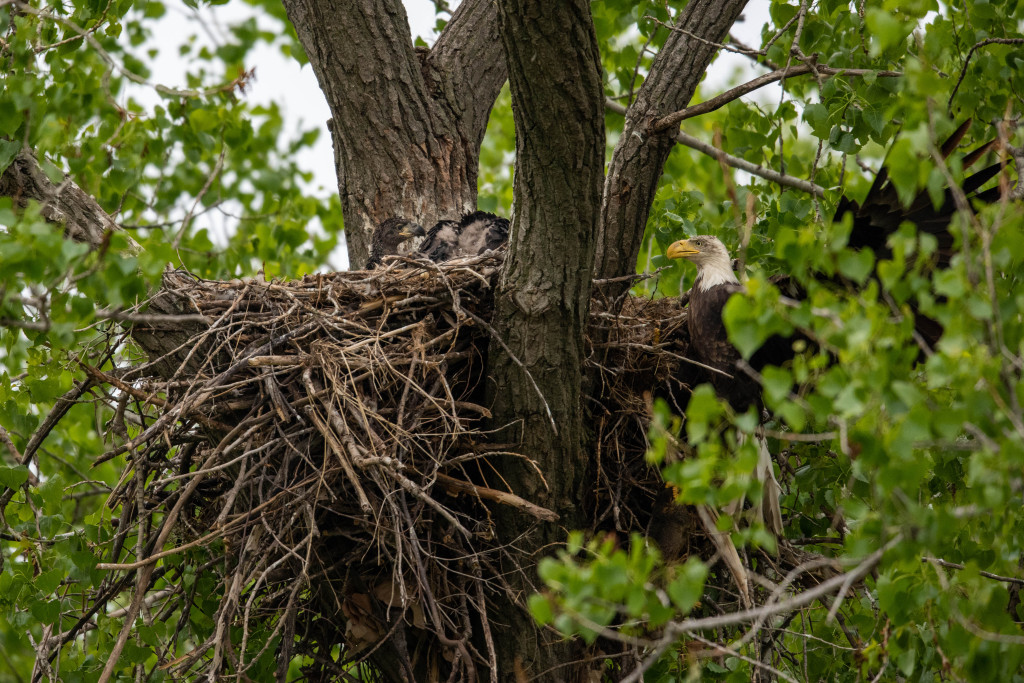
Cup Nest
This is probably the most familiar and common nest you will see, used by nearly three-quarters of all songbirds. This type of nest is essentially a modified platform nest. The birds will construct a supporting platform to a tree, shrub or rock first and then the sides are built and glued together with mud for additional strength. The inner cup is built last and lined with feathers, animal fur or soft plant material. You may have seen robins and ruby-throated hummingbirds constructing these nests.
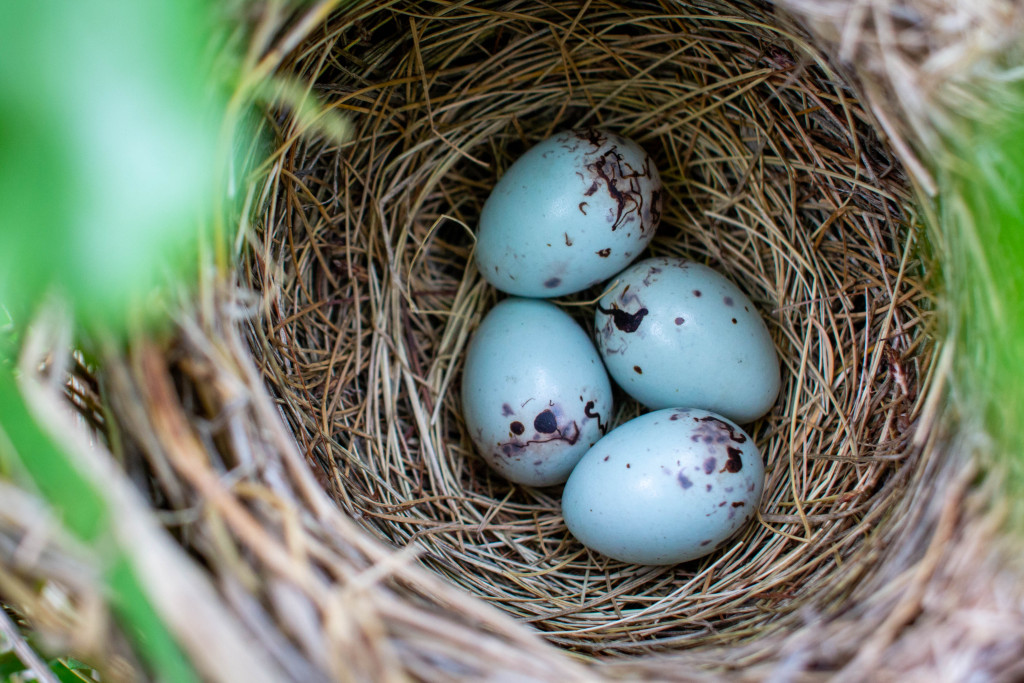
Pendulous Nest
This is an unusual nest. It looks more like a sock hanging from a tree rather than a bird nest. This type of nest is inaccessible to most predators and normally constructed on the ends of the smallest tree branches that wave wildly in the wind. They are woven tightly together with plant materials and are super strong and watertight. This type of nest normally takes around a week to build and is used mostly by tropical birds, but in Nebraska, you will see orioles building pendulous nests.
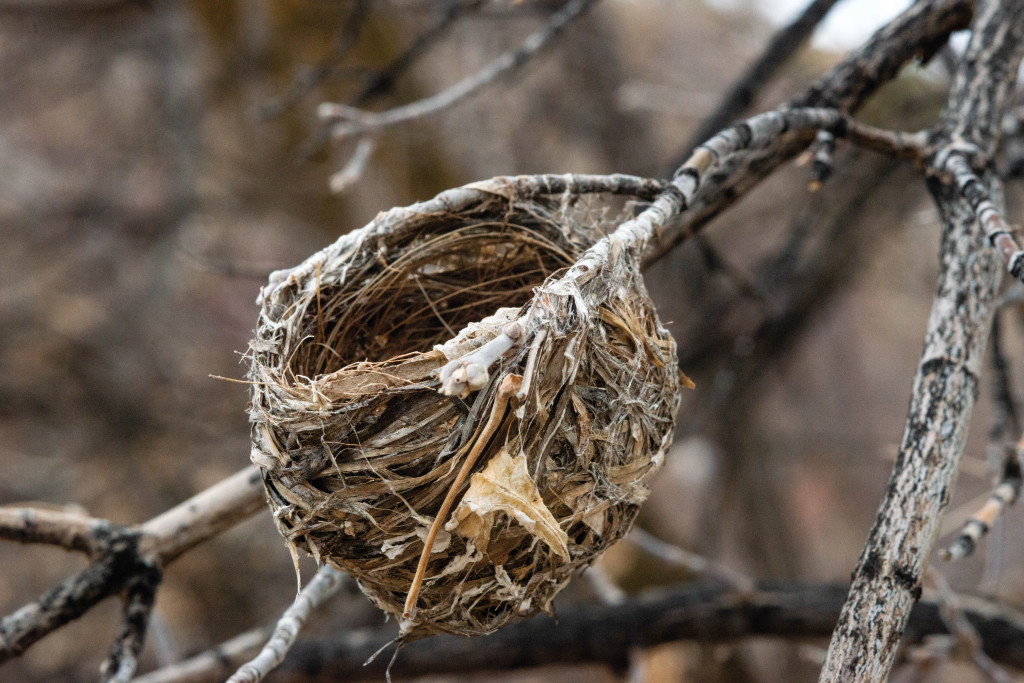
Cavity Nest
Cavity nests are used by many different types of birds, from owls, to woodpeckers, to eastern bluebirds. These nests are excavated in a tree branch or a trunk, and they normally have extremely small entrances, which lead to a longer inner chamber up to 10 inches long. These nests are typically constructed by woodpeckers, and while the builder uses its nest only once, other birds will utilize cavity nests long after the original occupants have moved out.
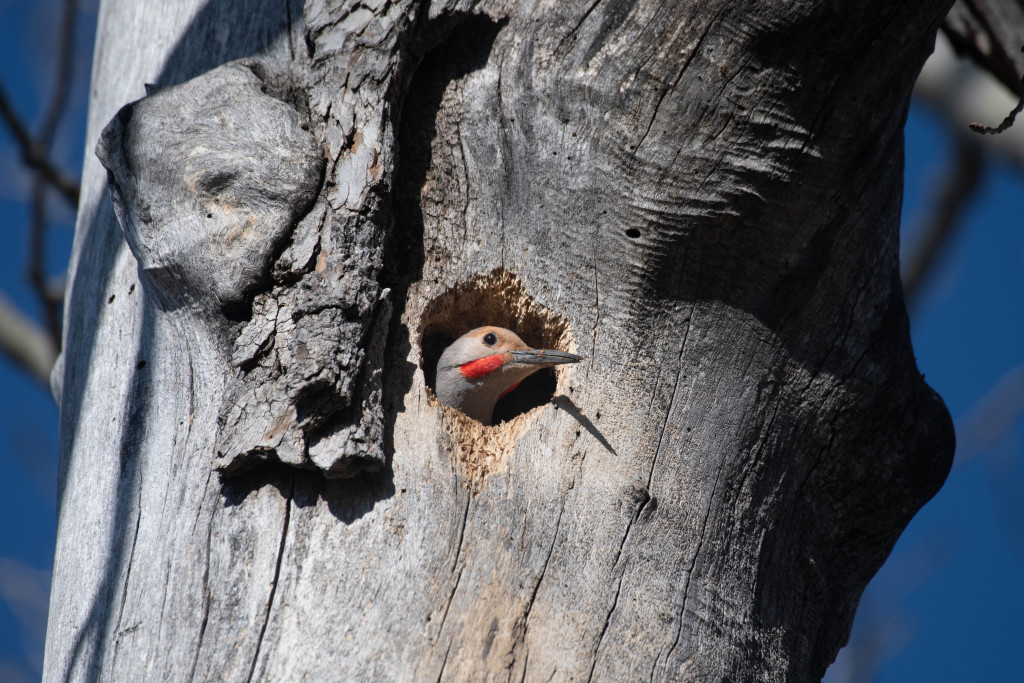
No Nests
And the cleverest of all nest types is the no-nest situation, or what is sometimes called the daycare nest. For example, brown-headed cowbirds participate in a strategy known as brood parasitism. The female will not construct a nest, but instead, lay her eggs in other birds’ nests, sometimes kicking out the other birds’ eggs or crushing them. The unsuspecting mother then raises the cowbird’s offspring. Here, the bird wastes no energy building a nest, which will likely be raided by a predator anyway.
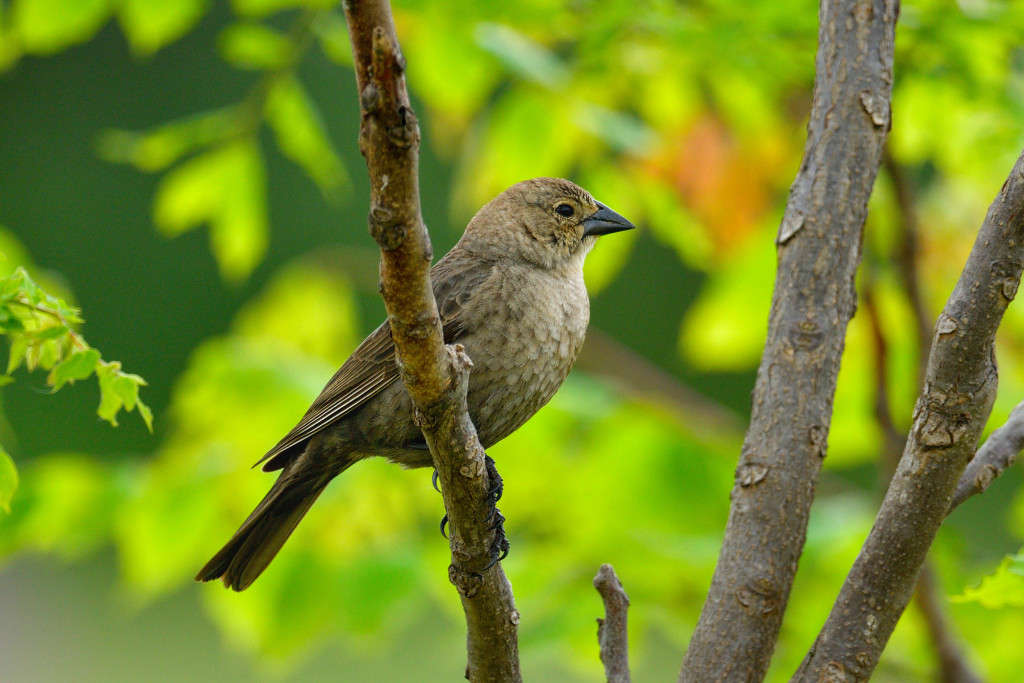
The next time you go hiking or camping, use this information to help you identify different types of birds’ nests. To get more involved, the nation-wide community science project called Project NestWatch was created to track the status and trends of reproduction in birds. Through this project, you can help scientists gather data by submitting information on nests, eggs and baby birds. Participation in NestWatch is easy, and anyone can do it. Visit nestwatch.org to get started.
